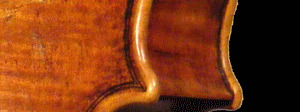 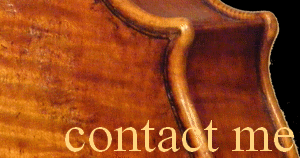
|
|
Workshop
"The sound qualities of a bowed instrument are rarely separate
from its aesthetic qualities. The instrument-maker searches for and
chooses measurements, relationships, proportions in function not only
of the aesthetic form but above all of the acoustic result."
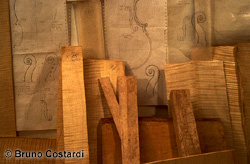
Many instruments built today are closer to the classic instruments of those built in nineteenth and twentieth centuries frequently with the french method. The return to traditional techniques classic or Cremonese . has come about in the last decades. - The construction -
When I build on reference models I concentrate on a rigorous style, where no incision is left to chance. Each time I pick up a mould, I discover a new nuance or detail which had escaped me previously, because I don't repeat the same model time after time. Passing frequently from a Cremonese (Amati, Stardivari, Guarneri) to a Brescian (Gasparo da salò) or Venetian (Santo Serafino) reference, stops the eye from becoming used to a model, and each time this makes me reflect on a particular detail, even if I have already made it many times. In this way I sometimes discover imperfections in the form, which I modify and refine on the workshop moulds. In this way production evolves constantly, both from a functional and an aesthetic point of view. It's highly improbable that an instrument maker does something genuinely new; each project starts from perhaps an instrument seen, or maybe a photograph of an instrument from another period, or from the modification of models already used. One of the best moments of the work is that concerning the creation of the idea of the model, the preparation of the design of the various parts, the shapes and forms in cardboard, the details. Calculating proportions, trials and tests, comparison with other instruments. This is the phase where the aesthetic form and the creativity of the instrument-maker must blend with the expertise and the precise yet constant geometric proportions needed to create a harmonic and pleasurable instrument. From the project mould one obtains the internal form in wood. To the form, with a few drops of glue, the rough blocks are tacked, when shaped, thus completing the profile of the instrument: then the head and base blocks are cut and added to the form.  
After having glued the rib-linings (only on the underside to enable the creation of the form), the silhouette of the instrument is ready to be transposed onto the spruce plate and onto the maple base plate which up until this point were two boards of planed wood. When I have to choose timber, I like to look at it, to search for the imperfections to avoid them during the cutting, to imagine the parts of the instrument already formed in this block, and to think about how to remove them without ruining them. I prefer woods with a marked grain and irregular eccentric flashes. In establishing definitive thickness, I am guided by the hardness and weight of the wood. Once the front and back tables have been trimmed and contoured, the maximum height at the centre of the arching, and the thickness of the sides calculated. These are used as a reference point for the sculpture of the arching. They are firstly reduced with a chisel, then with small curved planes and finally finished with blades.  
The
thicknesses are obtained by gouging the wood from the inside. (Click the picture to magnify)  During the sculpturing of the arching I draw the FF sound holes) several times on the plate until I am completely satisfied. Then I apply the bass bar. (Click the picture to magnify) Once the bottom is glued to the ribs one can finally extract the mould and close the harmonic case, gluing on the plate. The purfling is carried out, very fine strips are inlayed, creating an incision around the now perfectly formed contour. The final finishing of the body involves the rounding of the edges, which is normally done before grafting the neck - these last operations, while not of a particularly creative character, are important for the overall success of the instrument. In each phase of the work I do not think of the instrument as an end in itself, but complementary to the artistic realization of the musician. The neck, composed of the head, scroll and the finger board, is obtained by reduction from a perfectly squared block.  
Each cut is guided by a mould, for the contour and the development of the back. After the sculpting of the scroll, and the perforation of the holes for the tuning pegs, the neck is shaped on the fingerboard and is inserted in the complex jointing in the harmonic case, attaching to the head block, finishing with the shaping of the heel, and the button. (Click the picture to magnify)
Here the images of the construction of a violin https://www.flickr.com/photos/149370936@N08/sets/72157682164809265 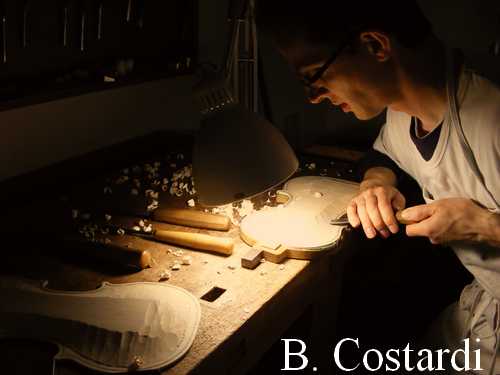
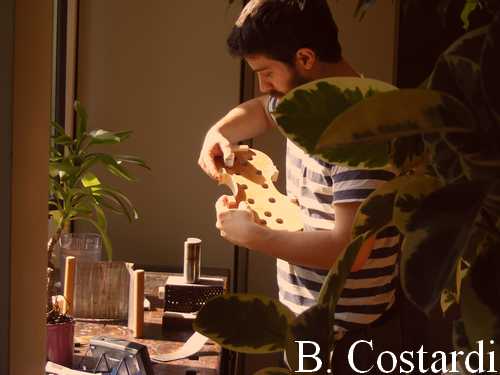
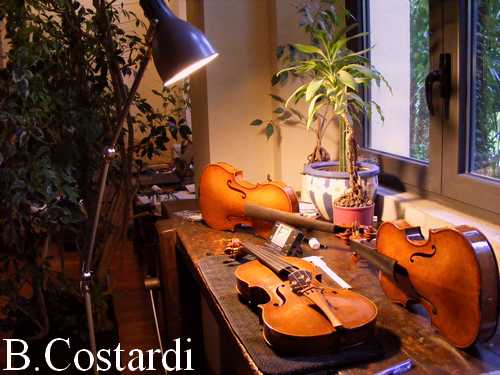
Use of this Web site means that you
accept the Terms of use www.minugia.it/labora-e.htm |

